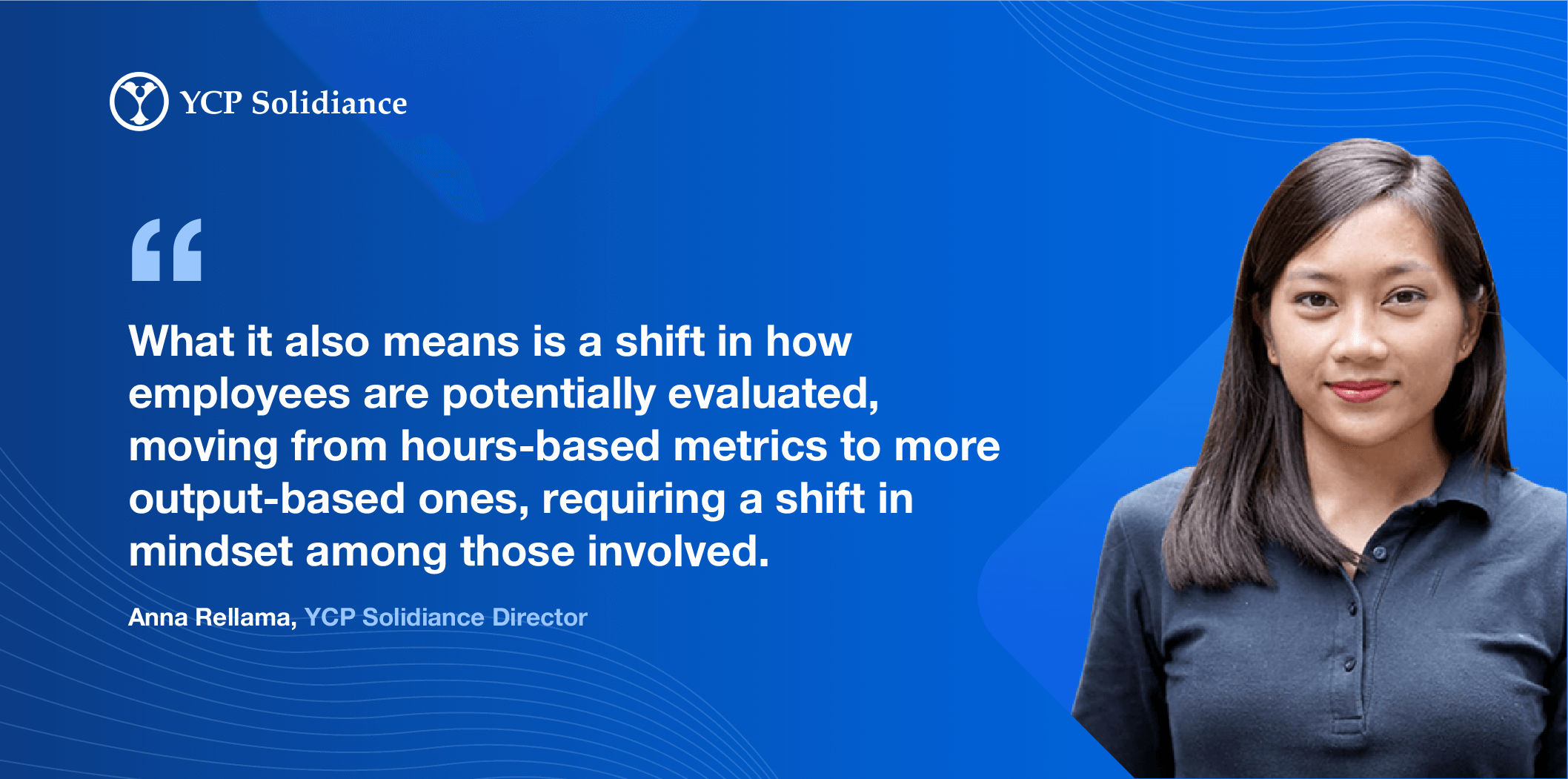Office life forever changed in March 2020, as countries throughout the world went on lockdown to help curb the spread of COVID-19. Workplaces were forced to adapt a work from home policy, replacing in-person meetings with video conferences and files shared over the cloud.
Over the past year what was once the product of a rushed transition has become the new norm, and companies all over Southeast Asia are assessing their strategies to keep a work from home policy in place moving forward as the region struggles to contain COVID-19. One popular option that provides flexibility—and is being co-opted by various industries—is the hybrid work model.
The Hybrid Working Model
Outlets such as Forbes and the BBC have defined hybrid work as a model where employees are given the flexibility to work both in-office and remotely. The feasibility of hybrid work is traditionally rooted in the nature of the work being undertaken. Office workers, as well as those in more digitalized sectors like e-commerce and tech, are seen as the ones who would benefit most from this model. But while most have focused on the physical set-up of hybrid work, our team of professionals in YCP Solidiance also want to emphasize that hybrid work means a shift in working mindset as well.
“Rather than being judged by the number of hours they work, it is more focused on output rather than process,” says Naithy Cyriac, YCP Solidiance Partner working with clients both in Asia and Europe. “Rethinking how we operate”—even in more traditional, in-person work sectors like logistics and banking—“has been accelerated.”
Anna Rellama, YCP Solidiance Director in the Philippines, agrees. “It also promotes more independence among staff...the long-term impact is one that’s more positive than negative actually, because you get more businesses embracing flexibility, which in general is a great characteristic to have as an organization.”
The Cultural Landscape of SEA
While both Cyriac and Rellama embrace hybrid work in the time of COVID-19, they both note that its effectivity within the region must work with Southeast Asian culture, which heavily emphasizes family ties and camaraderie.
YCP Solidiance Partner Mickael Feige, who handles operations in our Thailand office, agrees. “They like a camaraderie atmosphere with colleagues. Teams enjoy lunch together…it is no longer there because of remote [work], and it is missed.”
Working together in a tight-knit, almost family-like atmosphere is central to SEA employees’ desire to return to the office—for example, a study done by Microsoft shows that 78% of workers in the Philippines, despite fears of contracting or spreading COVID-19, are missing face-to-face team interactions and cite this as a reason to go back to in-office work.
However, employees are also cautious about returning to their offices, as they are concerned about possibly contracting the virus or infecting their family members. Strong family ties in the region also mean the majority of working adults in SEA countries still live in the family home with parents, siblings, and other relatives in small urban spaces.
A study by Savills cites that Western cities like Los Angeles and Paris were able to adopt remote work faster due to larger residential spaces and faster Internet connection, while cities like Ho Chi Minh would have trouble doing so rapidly. Feige also cites the largely tropical climate of the region that makes working from home full-time uncomfortable. Finding the balance between excelling due to a collaborative atmosphere and keeping loved ones safe is one of the most integral portions of assessing a hybrid work strategy.
Key Recommendations for SEA Companies
Transitioning to hybrid work may be difficult due to many factors, but our professionals emphasize that it can be done through a proper assessment of the company’s risk factors, output, and most importantly, work from home best practices that take into primary consideration the specific needs of its people:
- Create a hybrid set-up that facilitates structure while promoting flexibility. A model already used by many companies are split or “rolling” shifts, which entail assigning employees working teams and dates they are required to be present in the office. This also means “revisiting requirements for check-in or time-in,” according to Cyriac, to find a system that prioritizes high-quality output over a high number of hours.
- Review the company’s data security strategy and refresh employees on current confidentiality measures. “Safety measures to control data will need to be in place for everybody,” emphasizes Feige. With only small groups of employees present in-office, securing company documents and property through digital means must be a priority.
- Revisit the need for office space. Feige finds that hybrid work will have a large effect on office real estate as more companies put capital towards digital solutions and COVID-19 safety measures—already, companies in high-priced areas like Singapore are reassessing their current real estate. “Keep what you have, instead of expanding.”
- Put your people and their needs first through open communication. For team-centric SEA employees, it is a must to “create safe spaces, even online,” Rellama says. “Set up regular virtual check-ins…it’s that feeling of connectedness that you want to emphasize.” This also means prioritizing employee benefits such as remote healthcare, leaves for family crises, and open discussions about personal time and mental health.
“As the world has become more globalized, this [hybrid work] will become more normalized,” Cyriac concludes. And with more employees choosing this future-forward option, it is now up to companies to make sure they make the necessary changes to transition.
For more insights on the Southeast Asian region, subscribe to our newsletter here.




